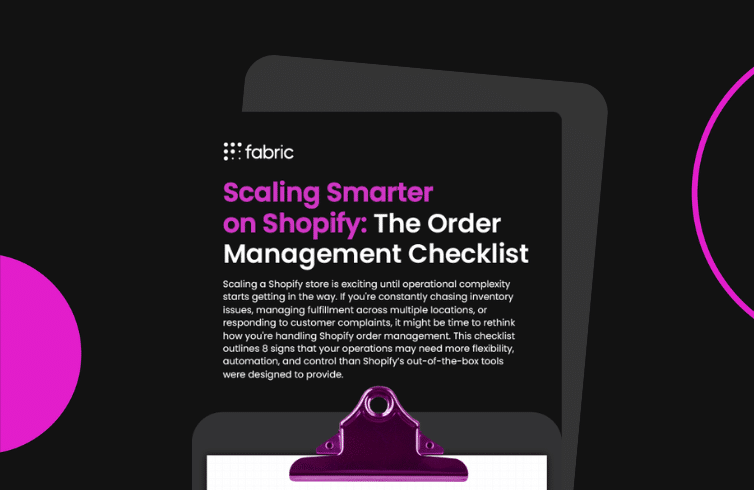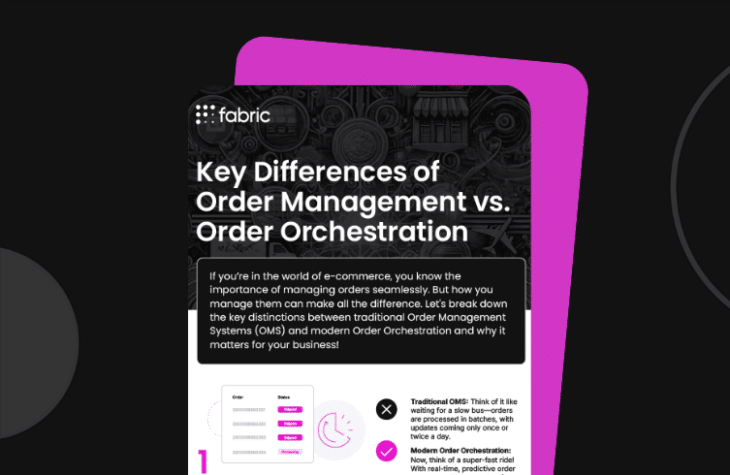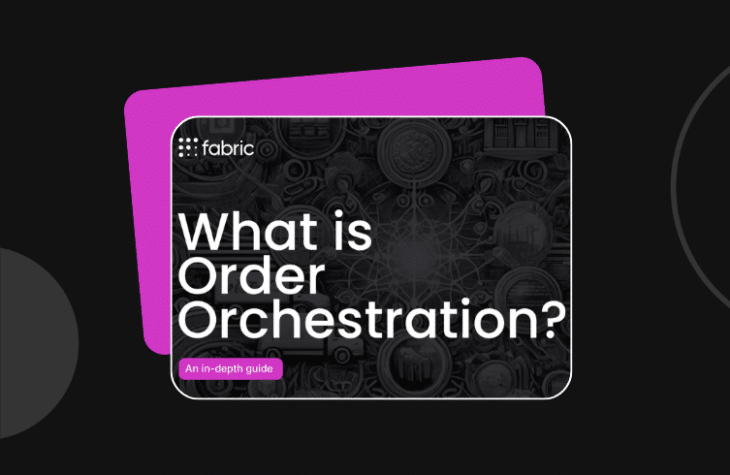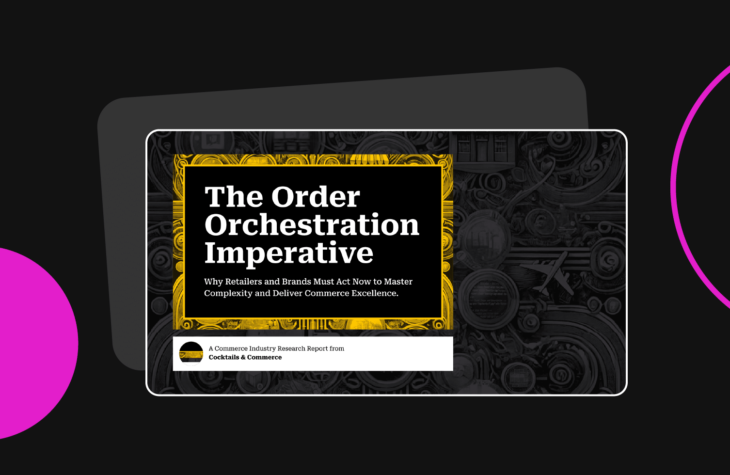The Order Management Checklist for Scaling Brands on Shopify

Scaling on Shopify is exciting until complexity starts slowing you down. If you’re hitting limits with visibility, fulfillment flexibility, or operational control, it’s time to take a closer look at your Shopify order management setup.
This infographic outlines eight key signs that your current approach might need to be extended as your brand grows. From inventory issues to fulfillment strain, we break down how fabric OMS gives scaling brands the tools they need to stay in control.
Whether you’re managing multiple channels, increasing order volume, or introducing new fulfillment methods, Shopify order management needs to keep pace. fabric helps you do just that with real-time visibility, intelligent automation, and built-in flexibility.
In this infographic, you’ll learn how to:
- Spot the 8 most common order management challenges scaling brands face on Shopify
- Streamline real-time inventory across all stores, warehouses, and channels
- Reduce manual work with smarter, automated fulfillment decisions
- Handle pre-orders, backorders, and split shipments with greater precision
- Optimize fulfillment with more control at the store and location level
Why it matters for scaling Shopify Plus merchants
If you’re scaling Shopify Plus for high-volume sales, you may be feeling the strain of coordinating fulfillment across more locations, channels, and order types. While Shopify offers some built-in capabilities, many brands need greater configurability and control to manage increasing complexity.
This checklist highlights the key areas where fabric OMS extends Shopify’s functionality, especially when it comes to unified inventory visibility, flexible fulfillment logic, and scalable operations.
Looking for how to extend Shopify functionality without overhauling your stack? This is your first step.
See it in action
Curious how fabric OMS can elevate your Shopify order management and help you scale with confidence? We’ll walk you through how fabric OMS supports your growth, from smarter fulfillment decisions to more agile, omnichannel operations.




